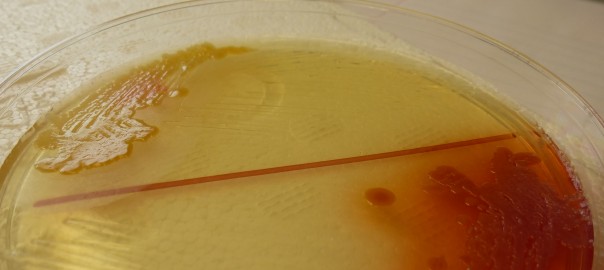My lab studies bacteria of the genus Photorhabdus.
Q: Why should you care about Photorhabdus?
A: THEY GLOW!
In fact, Photorhabdus are the only known bioluminescent terrestrial bacteria in the world!
The genes that make Photorhabdus glow were transferred from other bacteria via a process called horizontal gene transfer – this is the same evolutionary process that has led to the overabundance of multi-drug resistant bacteria in many hospitals worldwide.
A: Photorhabdus lead a double life. These bacteria are both mutualists of Heterorhabditis spp. nematodes and deadly pathogens of many types of insect larvae.
We’re interested in understanding how Photorhabdus successfully navigate these two lifestyles – what similar (or different) molecular mechanisms define these bugs as “friend” or “foe”.
My lab pursues these and other basic questions about many aspects of Photorhabdus biology with an interdisciplinary approach: techniques range from molecular and computational biology to genetics and biochemistry.
Currently, we are focused on two specific areas of Photorhabdus research.
A) Why do they glow & how is light production regulated in these bacteria?
B) What is the microbial ecology of the nematode and insect larva hosts?
